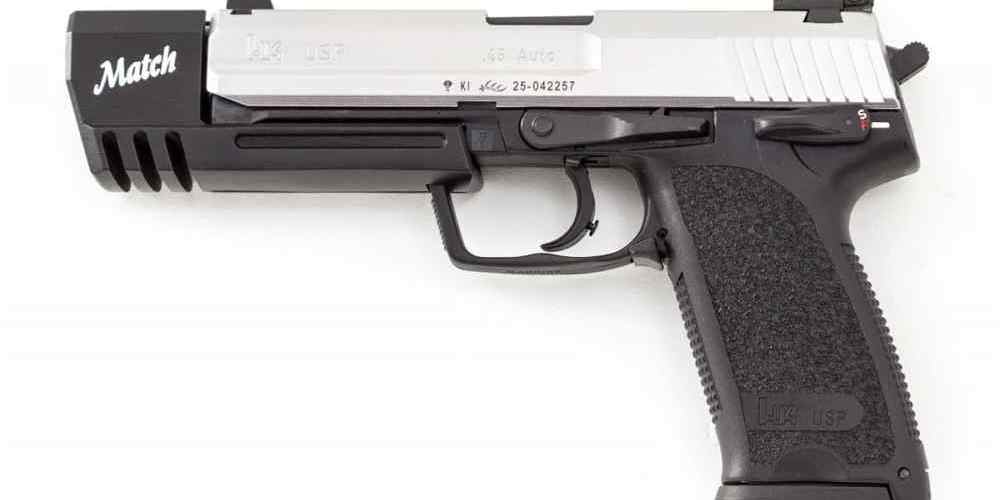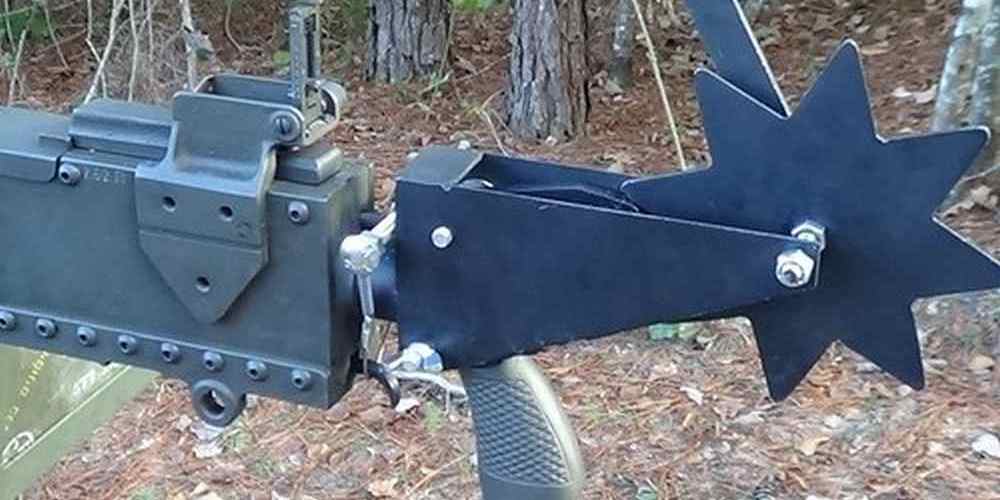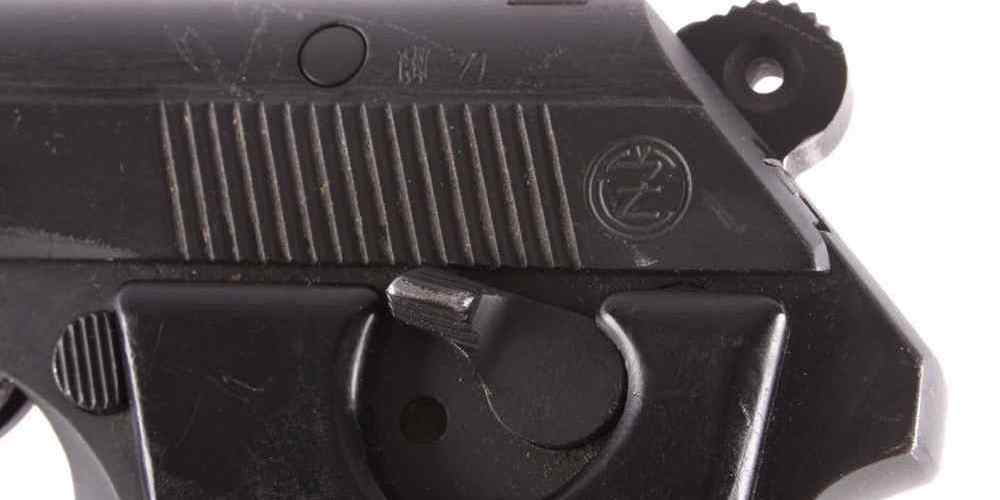“Slide Stop Solutions: Your quick fix for semi-auto slide issues.”
Common Slide Stop Problems and How to Fix Them
If you own a semi-automatic handgun, you may have encountered issues with the slide stop at some point. The slide stop is a crucial component of a semi-auto pistol, as it is responsible for locking the slide back after the last round is fired or manually locking the slide back for maintenance. However, like any mechanical part, the slide stop can sometimes malfunction or cause problems. In this article, we will discuss some common slide stop problems and provide quick fixes to help you get your handgun back in working order. One of the most common issues with a slide stop is failure to lock the slide back after the last round is fired. This can be frustrating, as it can prevent you from quickly and easily reloading your handgun. One possible cause of this problem is a weak or worn-out slide stop spring. To fix this issue, you can try replacing the slide stop spring with a new one. This is a relatively simple and inexpensive fix that can often solve the problem. Another common problem with a slide stop is the slide locking back prematurely, before the last round is fired. This can be caused by a variety of factors, including a worn-out slide stop or an improperly installed slide stop spring. To fix this issue, you can try replacing the slide stop with a new one or adjusting the tension on the slide stop spring. If the problem persists, you may need to seek the help of a professional gunsmith to diagnose and fix the issue. Sometimes, the slide stop can become difficult to engage or disengage, making it hard to lock the slide back or release it. This can be caused by dirt, debris, or corrosion on the slide stop or slide stop notch. To fix this issue, you can try cleaning the slide stop and slide stop notch with a solvent and a brush. If the problem persists, you may need to lubricate the slide stop with a high-quality gun oil to help it move more smoothly. In some cases, the slide stop may become loose or wobbly, causing it to move out of position during firing. This can be dangerous, as it can prevent the slide from locking back properly or cause malfunctions. To fix this issue, you can try tightening the slide stop screw with a screwdriver. If the problem persists, you may need to replace the slide stop with a new one or seek the help of a professional gunsmith to ensure that it is properly installed and functioning correctly. In conclusion, slide stop issues can be frustrating and potentially dangerous, but they are often easily fixable with a few simple steps. By identifying the problem and taking the appropriate action, you can get your handgun back in working order and enjoy smooth and reliable operation. Remember to always follow proper safety procedures when working on your firearm and seek professional help if you are unsure of how to fix the issue. With a little patience and know-how, you can keep your semi-auto handgun running smoothly for years to come.
Troubleshooting Slide Stop Malfunctions in Semi-Auto Pistols
If you own a semi-automatic pistol, you may have encountered issues with the slide stop not functioning properly. This can be frustrating and potentially dangerous if not addressed promptly. In this article, we will discuss some common slide stop malfunctions and provide quick fixes to help you get your pistol back in working order. One of the most common issues with slide stops is the slide failing to lock back after the last round is fired. This can be caused by a variety of factors, including worn out or damaged slide stop components, improper grip on the pistol, or weak magazine springs. To address this issue, first check the condition of your slide stop components. Look for any signs of wear or damage, such as cracks or excessive wear on the contact points. If you notice any damage, replace the affected parts with new ones. Another potential cause of slide stop malfunctions is an improper grip on the pistol. If you are not holding the pistol firmly enough, the slide stop may not engage properly when the last round is fired. To fix this issue, make sure you are gripping the pistol firmly with your dominant hand, ensuring that your thumb is not inadvertently pressing down on the slide stop lever. Practice your grip and make any necessary adjustments to ensure a secure hold on the pistol. Weak magazine springs can also contribute to slide stop malfunctions. If your magazine springs are worn out or not providing enough tension to properly feed rounds into the chamber, the slide stop may not engage when the last round is fired. To address this issue, replace the magazine springs with new ones that provide adequate tension to feed rounds reliably. In some cases, the slide stop itself may be the source of the malfunction. If the slide stop lever is bent or damaged, it may not engage properly when the last round is fired. Inspect the slide stop lever for any signs of damage and replace it if necessary. Additionally, make sure the slide stop spring is properly installed and functioning correctly to ensure smooth operation. If you are experiencing issues with the slide stop not engaging when the pistol is empty, there may be an issue with the slide stop lever itself. Check for any obstructions or debris that may be preventing the slide stop from engaging properly. Clean the slide stop lever and the surrounding area to remove any dirt or debris that may be causing the malfunction. In conclusion, slide stop malfunctions in semi-automatic pistols can be frustrating, but with some quick fixes and preventative maintenance, you can keep your pistol in working order. By checking the condition of your slide stop components, ensuring a proper grip on the pistol, replacing weak magazine springs, and inspecting the slide stop lever for damage, you can address common slide stop issues and keep your pistol functioning reliably. Remember to practice proper firearm safety and always consult a professional gunsmith if you are unsure about making any repairs or modifications to your pistol.
Top Tips for Maintaining Your Slide Stop Mechanism
If you own a semi-automatic handgun, you know how important it is for the slide stop mechanism to function properly. The slide stop is responsible for holding the slide open after the last round is fired, allowing for quick and easy reloading. However, like any mechanical component, the slide stop can sometimes experience issues that prevent it from working as intended. In this article, we will discuss some common problems with slide stops and provide quick fixes to help you keep your firearm in top condition. One of the most common issues with slide stops is that they can become dirty or fouled with debris, causing them to stick or malfunction. To prevent this from happening, it is important to regularly clean and lubricate your slide stop mechanism. Use a cleaning solvent and a brush to remove any built-up grime, then apply a small amount of gun oil to ensure smooth operation. This simple maintenance routine can go a long way in preventing slide stop issues. Another common problem with slide stops is that they can become worn or damaged over time, leading to unreliable performance. If you notice that your slide stop is not engaging properly or is causing malfunctions, it may be time to replace it. Most slide stops are relatively inexpensive and easy to install, so this is a quick and effective solution to get your firearm back in working order. In some cases, the issue with a slide stop may not be related to dirt or wear, but rather to improper installation or adjustment. If you have recently disassembled your firearm for cleaning or maintenance, double-check that the slide stop is correctly positioned and secured. Additionally, make sure that any springs or pins associated with the slide stop are in good condition and properly installed. A simple adjustment or reinstallation may be all that is needed to resolve the issue. If you are experiencing intermittent slide stop issues, it may be worth checking your ammunition. Some types of ammunition, particularly those with weaker recoil, may not provide enough force to properly engage the slide stop. Try using a different brand or load of ammunition to see if this resolves the problem. Additionally, make sure that your firearm is properly lubricated and maintained to ensure reliable operation. If you have tried the above solutions and are still experiencing issues with your slide stop, it may be time to seek professional help. A gunsmith or firearms expert can diagnose the problem and recommend the best course of action to get your slide stop working properly. While it may be tempting to try and fix the issue yourself, it is important to prioritize safety and ensure that your firearm is in good working condition. In conclusion, the slide stop mechanism is a critical component of any semi-automatic handgun, and it is important to keep it in good working order. By regularly cleaning and lubricating your slide stop, replacing worn or damaged parts, and ensuring proper installation and adjustment, you can prevent and resolve common slide stop issues. If you are still experiencing problems, don’t hesitate to seek professional help. With proper maintenance and care, your slide stop will continue to function reliably for years to come.
Upgrading Your Slide Stop for Improved Performance
If you own a semi-automatic handgun, you may have encountered issues with the slide not locking back after the last round is fired. This can be frustrating and potentially dangerous if you are not aware that your gun is empty. Fortunately, there are some quick fixes you can try to improve the performance of your slide stop and prevent this issue from occurring. One common reason for slide stop issues is a worn or damaged slide stop lever. Over time, the slide stop can become worn down from repeated use, causing it to not engage properly with the slide. If you notice that your slide is not locking back consistently, it may be time to replace the slide stop with a new one. When choosing a new slide stop, look for one that is made from high-quality materials and is designed to fit your specific make and model of handgun. Some aftermarket slide stops are designed to be more durable and reliable than the stock options that come with your gun. Installing a new slide stop is a relatively simple process that can be done at home with basic tools. Another potential solution for slide stop issues is to clean and lubricate the existing slide stop. Dirt, debris, and lack of lubrication can cause the slide stop to not function properly. Remove the slide stop from your gun and clean it thoroughly with a solvent and brush. Once it is clean, apply a small amount of gun oil to the contact points of the slide stop to ensure smooth operation. In addition to replacing or cleaning your slide stop, you may also want to consider upgrading to an extended slide stop. Extended slide stops are designed to be larger and easier to manipulate, making it easier to engage the slide stop with your thumb. This can be especially helpful for shooters with smaller hands or those who struggle to reach the standard slide stop on their handgun. When choosing an extended slide stop, look for one that is designed to be compatible with your specific make and model of handgun. Some extended slide stops may require minor fitting or modification to ensure proper function. If you are not comfortable with this, it is best to have a professional gunsmith install the extended slide stop for you. In conclusion, slide stop issues can be frustrating, but there are several quick fixes you can try to improve the performance of your handgun. Whether you choose to replace, clean, or upgrade your slide stop, taking the time to address this issue can help prevent malfunctions and ensure that your gun operates reliably when you need it most. Consider trying one of these solutions to see if it improves the performance of your semi-automatic handgun.
Preventing Slide Stop Failures: Best Practices for Gun Owners
If you own a semi-automatic handgun, you may have encountered issues with the slide stop not functioning properly. This can be frustrating and even dangerous if it happens during a critical moment. However, there are some quick fixes and preventative measures you can take to ensure your slide stop works smoothly every time. One common issue with slide stops is that they can become dirty or clogged with debris, causing them to stick or not engage properly. To prevent this, it’s important to regularly clean and lubricate your firearm. Make sure to remove the slide stop and clean it thoroughly, paying special attention to any areas where dirt or grime may have accumulated. Another common cause of slide stop failures is improper assembly or installation. If you have recently disassembled your handgun for cleaning or maintenance, double-check that the slide stop is properly aligned and seated in its groove. If it is not positioned correctly, it may not engage with the slide properly, leading to malfunctions. In some cases, the slide stop itself may be worn or damaged, causing it to malfunction. If you notice excessive wear or damage on your slide stop, it may be time to replace it with a new one. Most gun manufacturers offer replacement parts for their firearms, so be sure to check with the manufacturer or a reputable gunsmith for a suitable replacement. If you are experiencing slide stop failures with a new firearm, it may be a sign of a more serious issue with the gun itself. In this case, it’s best to contact the manufacturer or a qualified gunsmith for assistance. They can help diagnose the problem and recommend the best course of action to resolve it. In addition to these quick fixes, there are also some best practices you can follow to prevent slide stop failures in the future. One important practice is to avoid riding the slide stop when chambering a round. This can put unnecessary stress on the slide stop and cause it to wear out prematurely. Instead, use the slide release lever to release the slide after chambering a round. Another best practice is to regularly inspect your firearm for any signs of wear or damage. This includes checking the slide stop for excessive wear, as well as inspecting other critical components such as the recoil spring and firing pin. By catching potential issues early, you can prevent more serious malfunctions from occurring down the line. Finally, it’s important to practice proper firearm maintenance and care to ensure your handgun functions reliably. This includes cleaning and lubricating your firearm regularly, as well as storing it in a safe and secure location when not in use. By following these best practices, you can help prevent slide stop failures and ensure your firearm is always ready when you need it. In conclusion, slide stop failures can be a frustrating issue for gun owners, but there are quick fixes and preventative measures you can take to address the problem. By cleaning and lubricating your firearm regularly, checking for proper assembly, and inspecting for wear or damage, you can help ensure your slide stop functions smoothly every time. Additionally, following best practices for firearm maintenance and care can help prevent slide stop failures in the future. By taking these steps, you can keep your handgun in top condition and ready for action whenever you need it.








